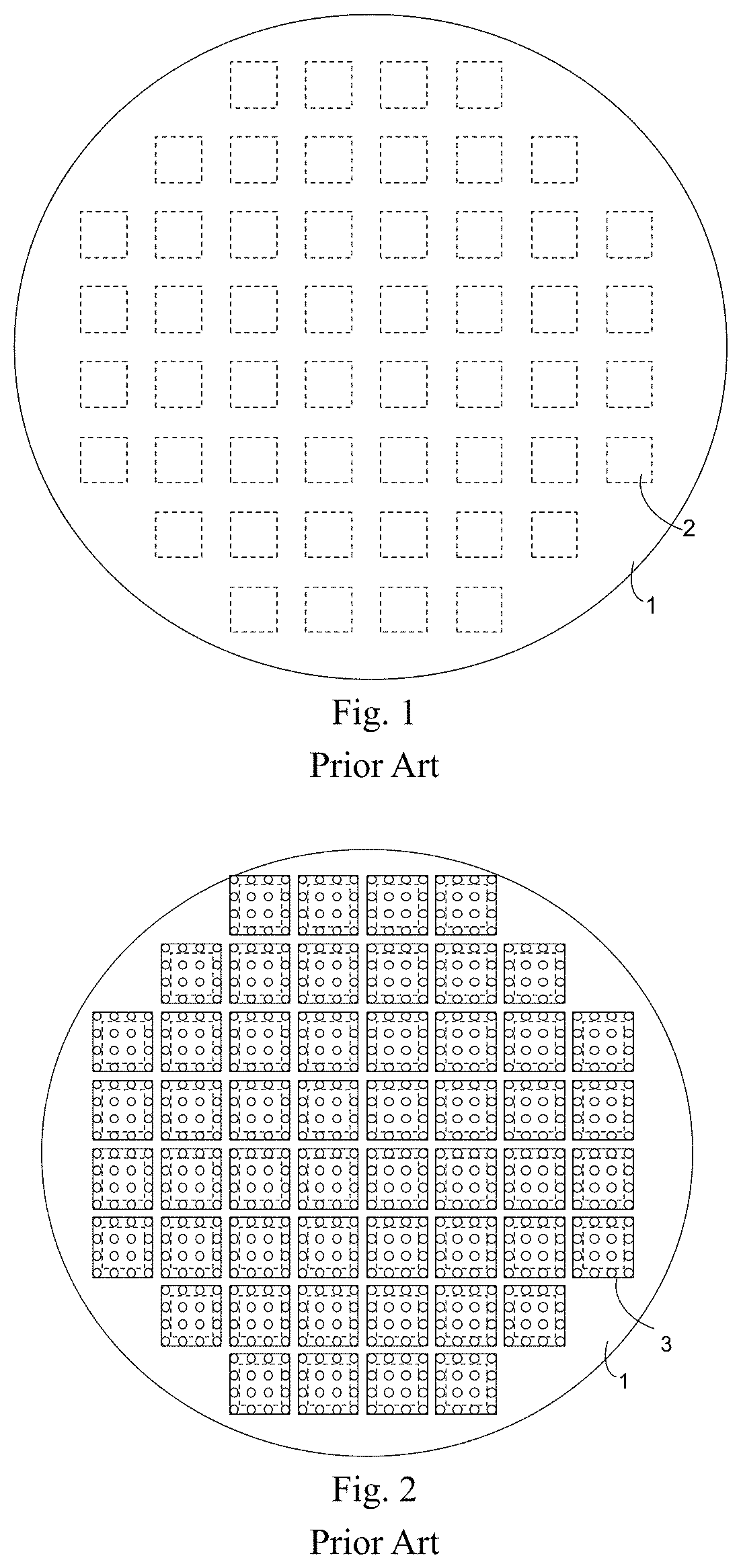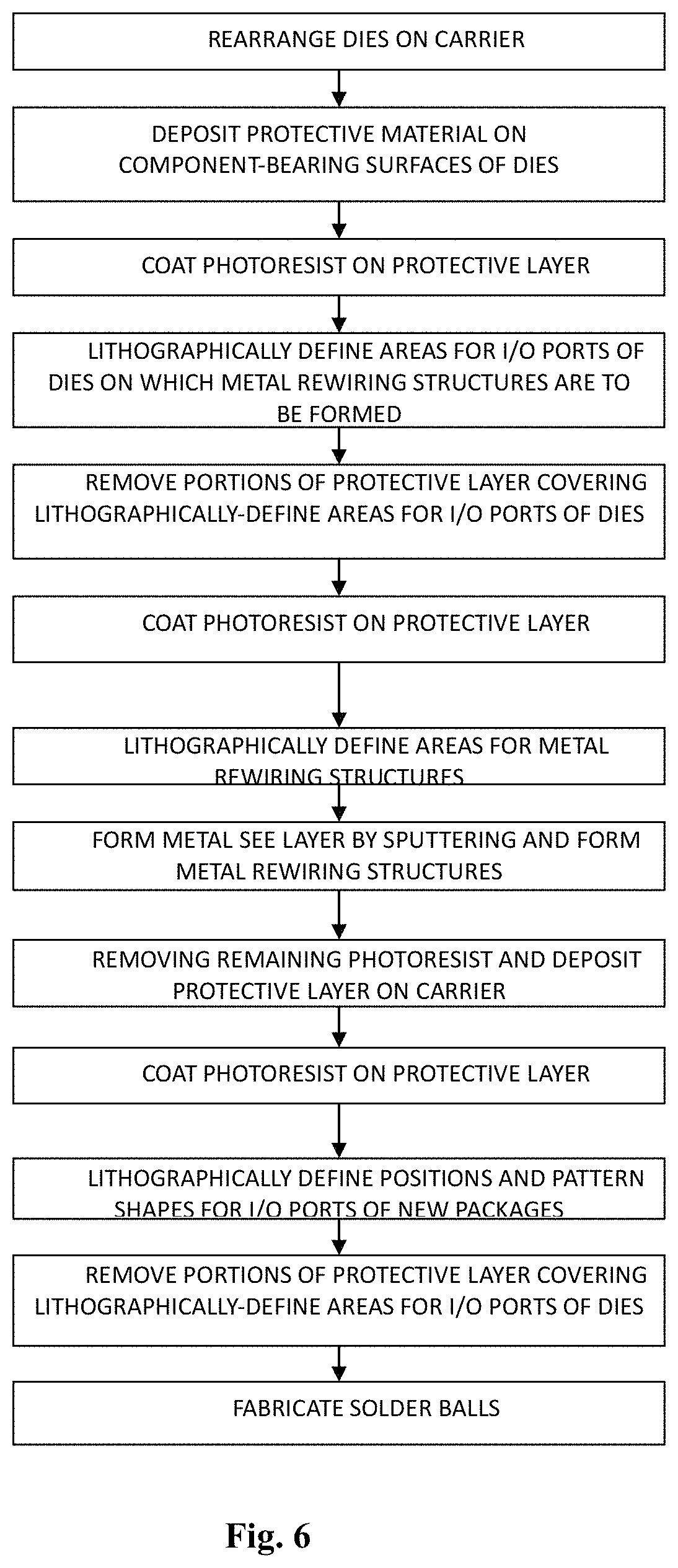Rewiring method for semiconductor
a technology of semiconductor and rewiring, which is applied in the direction of semiconductor/solid-state device testing/measurement, computer aided design, instruments, etc., can solve the problems of inability to catch up with the tact time (5-10 minutes) of the existing fowlp technique, the difficulty of the photolithography process to achieve a high yield, and the inability to mass production, etc., to achieve the effect of short process cycle, high efficiency and high accuracy
- Summary
- Abstract
- Description
- Claims
- Application Information
AI Technical Summary
Benefits of technology
Problems solved by technology
Method used
Image
Examples
embodiment 1
[0081]In a first embodiment of the present invention, there is provided a fan-out wafer-level packaging (FOWLP) method, in which, as shown in FIG. 5, dies are rearranged on a carrier 100. FIG. 5 only illustrates three dies 210, 220, 230 arranged horizontally, each having two I / O ports, i.e., two electrical connection terminals. That is, six electrical connection terminals 211, 212, 221, 222, 231, 232 are shown.
[0082]Here, an X-Y-Z three-dimensional coordinate system is defined with the horizontal direction as the X-axis, the vertical direction as the Z-axis and the direction perpendicular to the X-Z plane as the Y-axis.
[0083]While only three dies 210, 220, 230 are schematically illustrated in FIG. 5, the actual number of the dies arranged on the carrier 100 may be more than three. For each of the dies, standard coordinates of its electrical connection terminals and ball pads are determined in advance based on parameters of a subsequent ball placement process.
[0084]However, as can be...
embodiment 2
[0107]In a second embodiment of the present invention, there is provided a fan-out wafer-level packaging (FOWLP) method, in which when there are a relatively small number of dies rearranged on the carrier 100, positions of the dies, that have been rearranged on the carrier 100, are scanned and mapped, and a critical deviation range is determined based on the actual process conditions. In this embodiment, the critical deviation range is determined as 5-7 μm. For example, only dies with deviations beyond the critical deviation range may be processed by mark-free photolithography, while the remaining ones may be processed by mask-based photolithography. In this manner, a significantly enhanced FOWLP throughput can be achieved.
[0108]Alternatively, dies with deviations beyond the critical deviation range may be processed by mark-free photolithography, and those with deviations below the critical deviation range may be processed by mask-based photolithography. Additionally, each die with ...
PUM
| Property | Measurement | Unit |
|---|---|---|
| areas | aaaaa | aaaaa |
| size | aaaaa | aaaaa |
| shapes | aaaaa | aaaaa |
Abstract
Description
Claims
Application Information
 Login to View More
Login to View More - R&D
- Intellectual Property
- Life Sciences
- Materials
- Tech Scout
- Unparalleled Data Quality
- Higher Quality Content
- 60% Fewer Hallucinations
Browse by: Latest US Patents, China's latest patents, Technical Efficacy Thesaurus, Application Domain, Technology Topic, Popular Technical Reports.
© 2025 PatSnap. All rights reserved.Legal|Privacy policy|Modern Slavery Act Transparency Statement|Sitemap|About US| Contact US: help@patsnap.com



